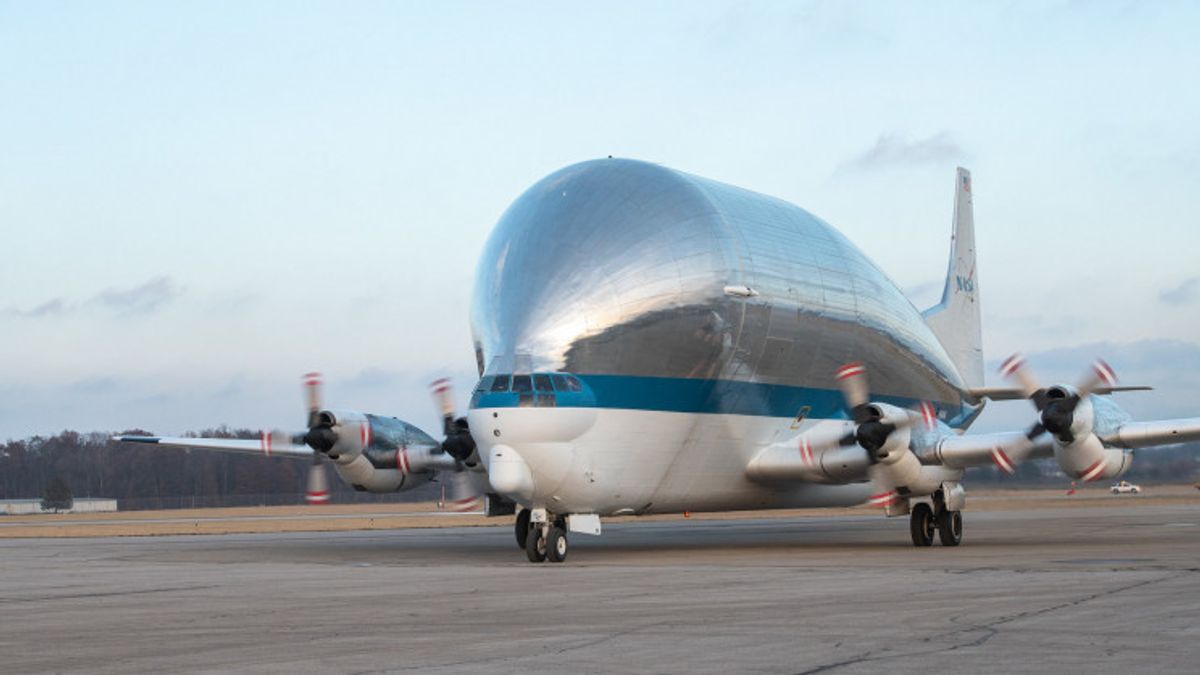JAKARTA - This massive cargo plane was tasked with moving parts of NASA's enormous Saturn V rocket in preparation for moon landings in the 1960s and 70s.
More recently, this November, the cargo plane has returned to carry components for the Artemis moon mission, which is scheduled for launch in 2025. This is evident from a NASA blog post.
A brief history of NASA's Super Guppy
The Super Guppy is designed to transport oversized parts that would not fit on a conventionally shaped cargo plane. It was originally developed in 1962 by a company called Aero Spacelines, who turned a Boeing KC-97 Stratotanker into a large cargo plane, originally called the "Pregnant Guppy".
Three years later, Aero Spacelines built a larger version, called the Super Guppy, with 25 feet (7.6 meters) of cargo space and a hinged nose for faster cargo loading.

Later, Airbus acquired the rights to the Super Guppy development from the now-defunct Aero Spacelines. Today, NASA is flying again the only remaining model plane of the flying giant.
Super Guppy's latest flight, commissioned the craft to transport a heat shield skin under development for NASA's Orion on November 9. Orion is a spacecraft that will fly manned missions to the Moon as part of NASA's Artemis mission.
Plans for a moon landing were recently postponed by NASA until 2025 from its original launch date of 2024. Part of the reason is due to a protracted legal dispute with Jeff Bezos' Blue Origin over awarding Elon Musk's contract for a lunar lander to SpaceX.
SEE ALSO:
Now that the legal dispute with Blue Origin is resolved, NASA will proceed with the Artemis project plans. The Orion heat shield transport mission saw the Super Guppy land at Moffett Federal Airfield near San Jose, California, after which the heat shield was transported by road to NASA's Ames Research Center in Silicon Valley.
NASA says the Orion heat shield is the largest ever developed for a manned space mission. The shield has a titanium frame covered by a carbon fiber shell that will protect the Artemis astronauts as they re-enter Earth's atmosphere at speeds of up to 25.000 mph (40.233 km/h) when they return from the Moon.
Before humans return to the Moon, NASA will conduct a test mission, called Artemis I, to ensure that all components of its Orion, including its heat shield, are working as expected, so that it can give the green light to Earth and await the return of the mission to the moon.
The English, Chinese, Japanese, Arabic, and French versions are automatically generated by the AI. So there may still be inaccuracies in translating, please always see Indonesian as our main language. (system supported by DigitalSiber.id)


















